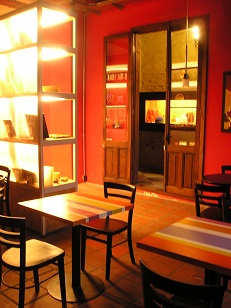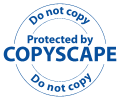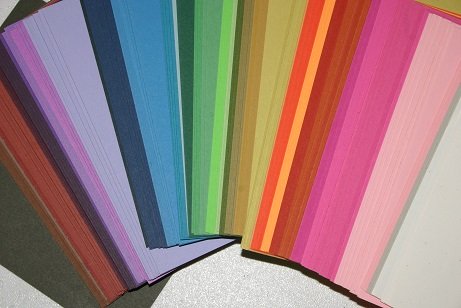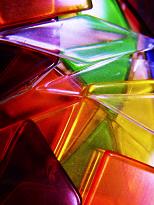Retail Business
Understand the use of color psychology
in your retail business
In establishing your retail business you have several tools available to you to attract customers to your store and, more importantly, to make a purchase from your store. These tools include attractive displays, music and color. Of all these, color is possibly the most important as it affects us subliminally and instinctively, without our even being aware of it.
The success of your business depends on how well you reach your target markets and how they respond to your business offers.
Before decorating your store you need to determine the age range of your customers, whether they are male or female, their culture, their education level, their financial status, as well as taking into consideration the type of product or service you are selling. Are you trying to attract a buyer who is price conscious, or one who is at the upper end of the market, children, adults or the elderly, male or female or both?
By understanding both the psychological and physiological impact of your choice of colors you can create a unified color scheme for your retail business that will have a positive effect on your customers and inspire them to visit you time and time again and to think of you first when they need your type of product or service. In other words, your customer will feel so comfortable in your store they will return on a regular basis and tell their friends about you.
What type of retail business do you have?
- Artistic and creative businesses such as florists, gift shops and designers, should use unusual color combinations that reflect their creative flair. These may include combinations of purple and variations of purple such as plum, magenta and other pinks, pale blue, and yellow. Pleasing color combinations rather than discordant combinations are best as they are a preview of your work.
- Fashion boutiques and beauty salons aimed at the female market should choose from softer feminine colors such as pastels, pinks, coral, soft blue or green, turquoise or light purple. In choosing the best colors for this type of retail business you must first take into account the target market. For the female market choose pastels and pinks, coral, turquoise or light purple. For the male market blue is always a good choice as the majority of men love all types of blue.
- Men's clothing stores need to choose colors that will attract their male customers, but they also need to take into account that often it is women who do the buying for their partners, sons or fathers. Blue is a color that is attractive to the majority of people, including both genders and all age groups, so it is a good choice for these stores. Adding some red or blue to the color scheme will add energy to the blue.

- Toy stores need to attract both children and their parents or grandparents who are the buyers. Bright primary and secondary colors will attract the children, while softer colors will attract their parents and grandparents. Ensure you have a mixture of these colors throughout the store in your displays.
- Restaurants, bistros, cafes and coffee shops, should use warm colors ranging from red to orange. Colors from the red range are stimulating to the appetite and encourage people to eat more. Colors from the orange range are stimulating to social communication and conversation as well as encouraging people to eat more. Orange also says 'affordable', yet good quality, depending on the variation of orange you use and the colors you combine it with. Combine with complementary colors for the best effect.
- Fast food outlets work well with a combination of red, yellow and white. Yellow keeps people moving so they don't hang around too long when they finish their meal. Red stimulates their appetite and white suggests hygiene.
- Upper-class restaurants can use softer versions of orange, such as peach, apricot, terracotta or coral to encourage appetite and conversation or deeper reds for elegance and appetite stimulation. Combine with some form of green, aubergine or cream for a stylish and elegant effect.
- Hotels and bars are wise to use some form of green to encourage people to drink more. Combined with a soft muted orange to encourage conversation and social communication, this would create an atmosphere of enjoyment in which patrons would drink continuously.
- Entertainment businesses need colors that exude fun and happiness. Yellow as part of your color scheme is appropriate for this type of retail business. If your business is to stimulate activity with participants then red will encourage this. If social interaction is your purpose, then orange is the best choice. Purples, mauves and pastel colors will create the right atmosphere for fantasy type businesses.
Choose combinations of colors that will send the messages you wish to convey
- Green is stimulating to thirst, so it is appropriate to use it in situations where a restaurant relies on beverages as a major part of its custom. Some green combined with a variation of either red or orange is appropriate for all food outlets. Green also helps staff tolerate a noisy environment.
- Yellow is a happy and playful color but it can create anxiety. If you want your customers to be in and out quickly, and to make quick purchases, then yellow will help. Otherwise use it in small amounts as it can agitate and stress some people.
- Blue will suggest you are honest and trustworthy and have a calming effect on your customers. Blue will also entice your customers to linger for longer in your store and help to retain loyal customers. It is a color favoured by most people.
- Red should be used in small doses in retail businesses. It can cause aggression and anger if used in large amounts so use it as an accent color to add energy, passion and excitement.
Always use complementary colors in small proportions to balance the main color you have chosen.
Too much of any one color can have a different effect to the one intended.
An excess of red can bring out aggression and anger, while too much green can make your customers and staff too relaxed; too much yellow can cause anxiety while too much blue can slow people down to a point of inactivity.
Use this link for more information on the psychological and physiological meaning of each color to give your retail store an individual and unique identity.
To return to Business Color from Retail Business
To return to the Home Page
Like to join our Facebook community?



New! Comments
Have your say about what you have just read! Leave me a comment in the box below.